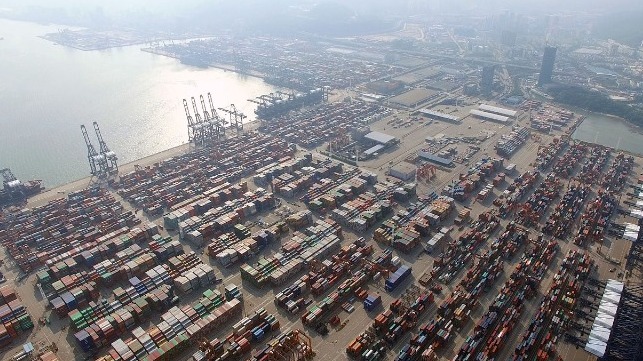Extreme Freight Rates Begin to Change Shippers' Calculations

The containerized shipping industry has been essential to global commerce for its low shipping costs. However, high freight rates are starting to have an impact on consumer goods. Already, consumers have started to feel the pinch of the surge on items such as furniture and coffee. Along the transpacific route, Alan Murphy, CEO of Sea-Intelligence recently estimated that freight rates for assembled furniture now account for a whopping 62 percent of the total retail value. It’s the same case for large appliances, for which up to 41 percent of the retail price is the shipping. As container rates continue to rise unabated, these commodities might be priced out: their thinner margins make it impossible to absorb rising costs.
In an interview with BBC, Scott Humphreys, the manager of a furniture supply enterprise based in the UK lamented the serious global supply chain bottlenecks, which are making it virtually impossible for his business to operate.
Although Peppermill Interiors supplies furniture in UK, almost half of its stock is imported from East Asia, primarily China. “A single armchair used to us cost £12 ($16) to bring in from China. It now costs us £100 (139). So the price we sell the chair has gone up by 25 percent - but that isn’t extra profit for us,” said Mr. Humphreys. “Some of the cheaper items, they’ve doubled in price. There’s no point bringing them in anymore.”
Are these setbacks likely to revolutionize the ocean freight industry’s business model?
Roar Adland, a Professor of Shipping at the Norwegian School of Economics, posed a similar question in view of the current disruptions in the industry. “Is the container shipping business model as insulated from disruptions as the carriers would like to believe - surrounded by a deep moat of dedicated infrastructure and complex logistics systems?” asked Adland.
In response, Prof. Adland sees these periods of ‘excess economics rents’ to be tempting for new players to skim the cream, by offering direct point-to-point services on the East-West trade lanes - using smaller vessels and secondary ports where congestion may be minimal.
“Think of the low-cost revolution in the airline business vs. the legacy hub-spoke system over the past 20 years. Both systems can coexist and complement each other in terms of price sensitivity and infrastructure utilization,” Adland wrote.
Lars Jensen, CEO of Vespucci Maritime, drove this point home in a recent commentary on the rise of regional shipping services on Pacific and Asia-Europe trade routes.
“As freight rates continue to reach ever new historical highs this has also opened the market for services on Pacific and Asia-Europe using smaller vessels which under normal circumstances would not be used to a large degree in the deep-sea trades,” wrote Jensen.
“A good example is the sudden new influx of new Pacific services from China United Lines (CULines), BAL, Wan Hai and Matson using quite small vessels mainly of 1,700-2,500 TEU range. Another example is CULines’ new Asia-Europe service with 4,300 TEU vessels,” Jensen added.
Meanwhile, the rigidity of the shipping industry will persist until port’s business model is revamped. Most ports fail to apply profit-maximizing pricing or - better still - a pricing model that exploits available capacity more efficiently. “Public ports have to ask themselves whether it is right that they continue to support an oligopolistic liner shipping model rather than taking a bigger share of the cake when there [are] super profits to go around,” wrote Prof. Adland.
The opinions expressed herein are the author's and not necessarily those of The Maritime Executive.
